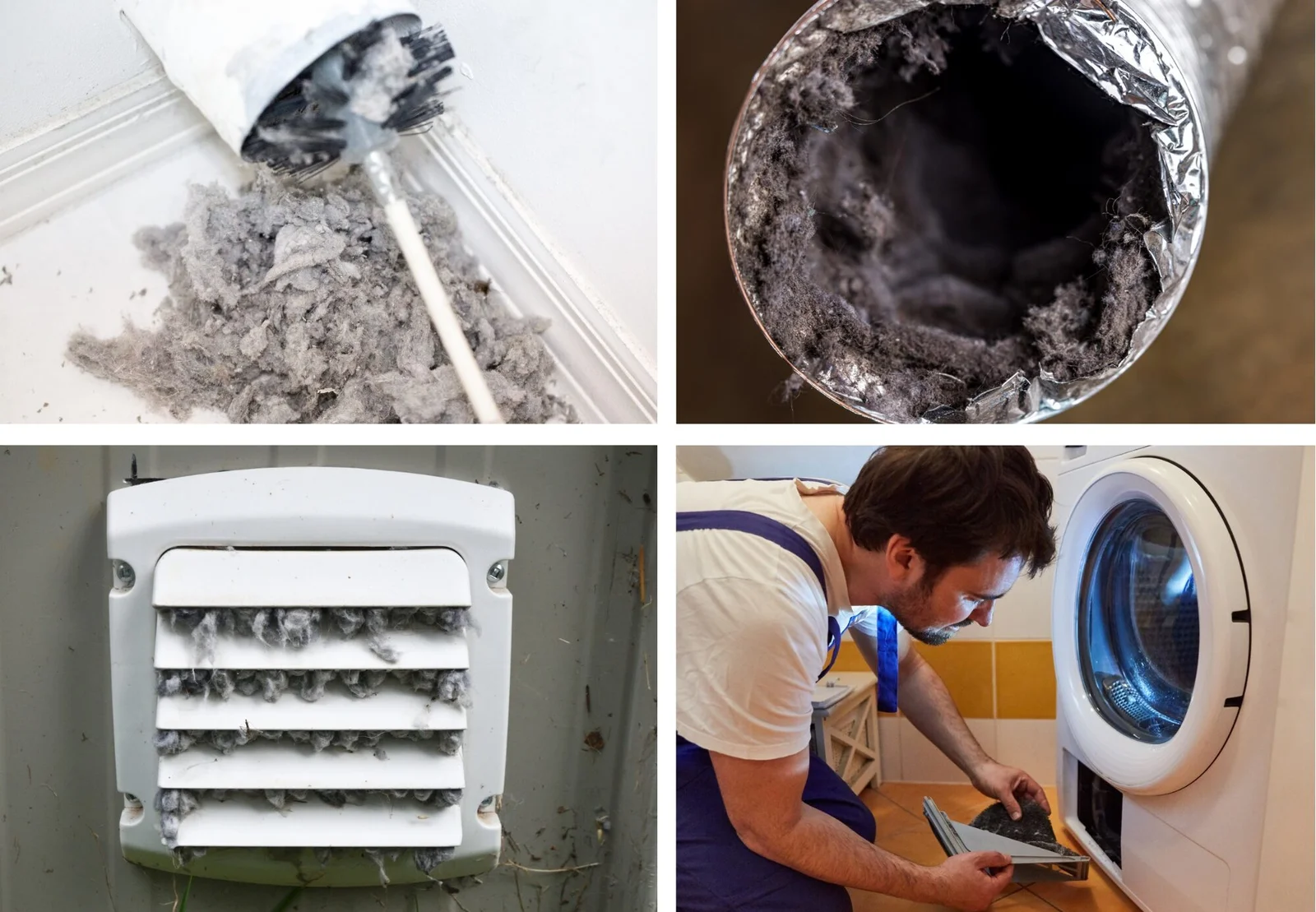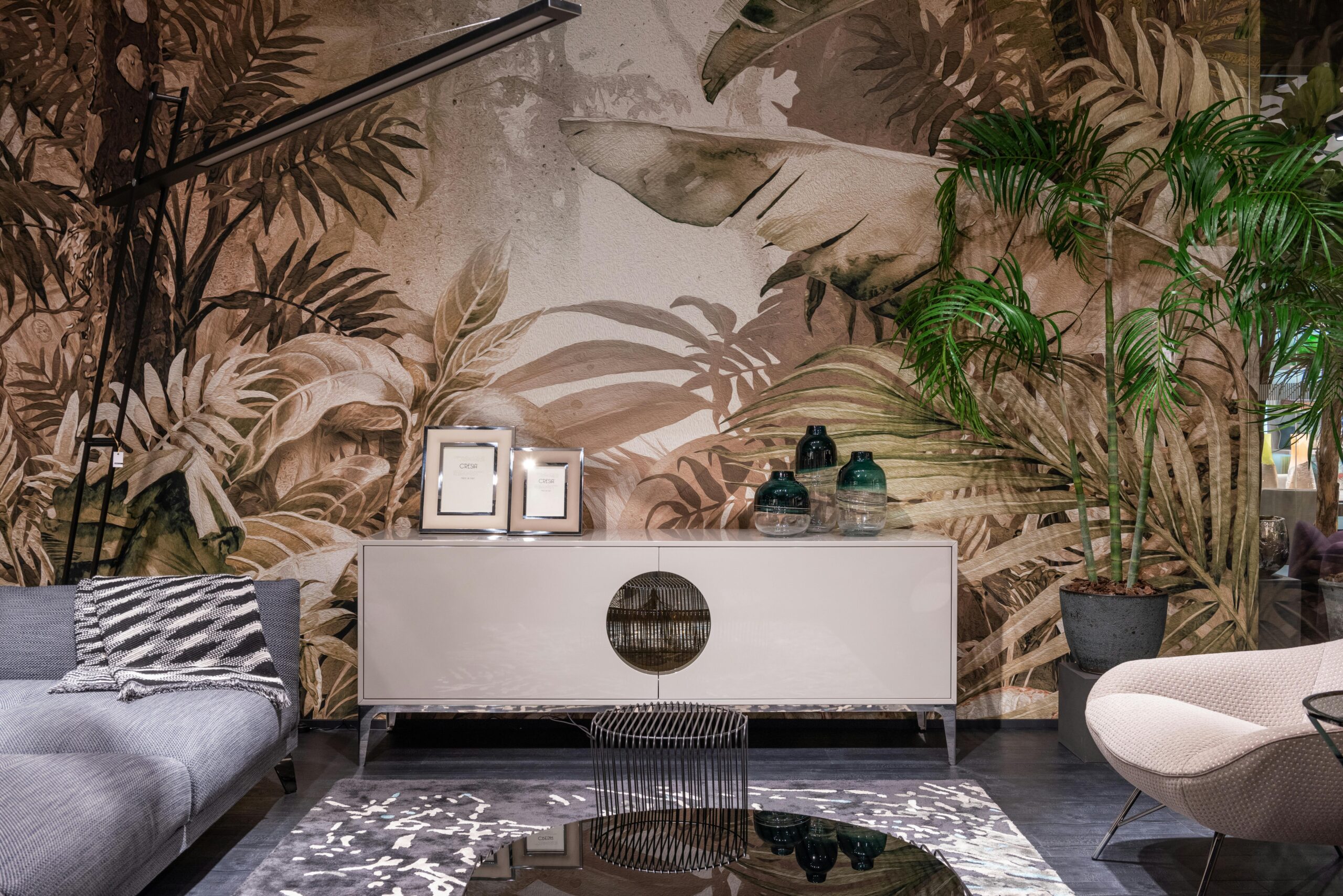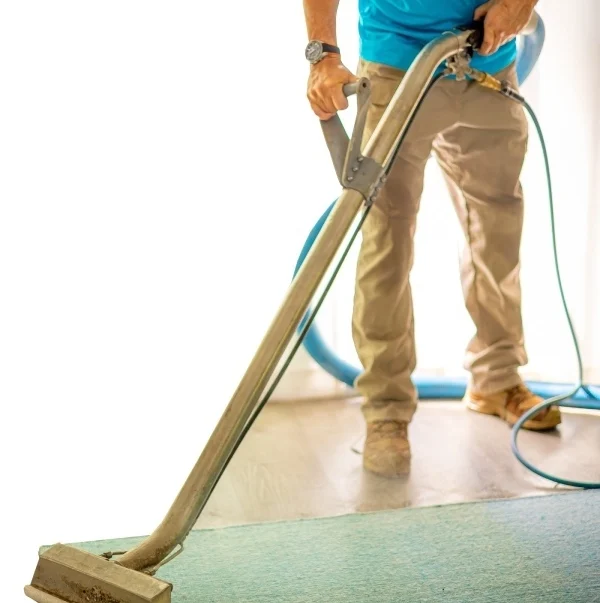HOME IMPROVEMENT
The Unsung Hero: How Regular Upholstery Cleaning Protects Your Home’s Air Quality

Introduction: The Overlooked Factor in Home Air Quality
When we think about maintaining good air quality at home, our minds often go to air purifiers, HVAC filters, and regular dusting. However, one crucial aspect that often gets overlooked is the cleanliness of our upholstery. Sofas, chairs, and other upholstered furniture are central to our daily lives, absorbing everything from dust and allergens to spills and stains. While these items add comfort and style to our homes, they can also harbor contaminants that negatively impact the air quality inside.
Regular upholstery cleaning is crucial in maintaining a healthy home environment, and Green and Clean Home Services excels at providing this essential care. Their expert cleaning techniques not only refresh your furniture but also help protect your home’s air quality by removing allergens and pollutants trapped in the upholstery.
This article explores the critical role that regular upholstery cleaning plays in protecting and enhancing your home’s air quality.
The Hidden Dangers in Your Upholstery
1. Dust and Allergens: A Silent Accumulation
Upholstered furniture acts like a sponge, absorbing dust, pollen, pet dander, and other allergens over time. While these particles may not be visible, they are very much present, and they can circulate in the air whenever you sit, lay down, or even move past the furniture.
- Dust Mites: One of the most common allergens found in upholstery is dust mites. These microscopic creatures thrive in the fabric, feeding on dead skin cells and multiplying rapidly. Every time you sit down, you could be releasing these mites and their waste into the air, aggravating allergies and respiratory issues.
- Pet Dander: If you have pets, your upholstery is likely to be a hotspot for pet dander. This allergen can easily become embedded in the fabric, contributing to poor air quality and triggering allergic reactions in sensitive individuals.
- Pollen and Outdoor Allergens: Even if your home is meticulously cleaned, outdoor allergens like pollen can still find their way inside, clinging to your clothes and then transferring to your furniture. Over time, these allergens accumulate, adding to the indoor air pollution.
2. Bacteria and Mold: The Unseen Invaders
Beyond allergens, upholstered furniture can also harbor bacteria and mold, especially in damp or humid environments. These contaminants not only affect air quality but can also pose serious health risks.
- Bacterial Growth: Spills, sweat, and general use can lead to bacteria growth within the fibers of your upholstery. While these bacteria are often invisible, they can cause unpleasant odors and contribute to a decline in indoor air quality.
- Mold Spores: In humid conditions, mold can begin to grow in your upholstery, particularly in hidden areas like under cushions or deep within the fabric. Mold spores are notorious for spreading through the air, leading to respiratory problems and other health concerns.
The Benefits of Regular Upholstery Cleaning
3. Enhancing Indoor Air Quality
One of the most significant benefits of regular upholstery cleaning is the improvement of indoor air quality. By removing dust, allergens, and bacteria from your furniture, you can ensure that the air in your home is cleaner and healthier to breathe.
- Allergen Reduction: Professional upholstery cleaning removes deep-seated dust, pollen, and pet dander, preventing them from becoming airborne and contributing to allergy symptoms. This is especially important for households with allergy sufferers or individuals with asthma.
- Bacteria and Mold Elimination: Regular cleaning also addresses the issue of bacteria and mold, ensuring that these harmful contaminants are removed from your furniture. This not only improves air quality but also prevents the spread of mold spores and bacteria, promoting a healthier living environment.
4. Prolonging the Life of Your Furniture
In addition to improving air quality, regular upholstery cleaning extends the life of your furniture. By removing dirt and debris that can wear down the fabric over time, you can keep your furniture looking and feeling new for longer.
- Fabric Preservation: Dirt and dust act like sandpaper on fabric, gradually wearing down fibers and leading to a dull, worn appearance. Regular cleaning removes these particles, helping to preserve the texture and color of your upholstery.
- Stain Prevention: Spills and stains that are not promptly addressed can set into the fabric, becoming difficult or impossible to remove. Regular cleaning helps prevent stains from setting, maintaining the appearance of your furniture and preventing the buildup of contaminants that can affect air quality.
How Often Should You Clean Your Upholstery?
5. Factors That Influence Cleaning Frequency
The frequency with which you should clean your upholstery depends on several factors, including the type of fabric, the amount of use the furniture gets, and whether you have pets or small children.
- General Recommendation: For most homes, professional upholstery cleaning is recommended at least once a year. This helps maintain the fabric’s appearance and ensures that allergens and bacteria are kept at bay.
- Homes with Pets or Children: If you have pets or young children, your upholstery is likely to experience more spills, stains, and dirt. In these cases, more frequent cleaning, such as every six months, may be necessary to maintain both cleanliness and air quality.
- High-Traffic Areas: Furniture in high-traffic areas, such as the living room or family room, will accumulate dirt and allergens more quickly than furniture in less-used areas. These pieces may require more frequent cleaning to keep them looking their best and to protect your home’s air quality.
6. DIY Maintenance Between Professional Cleanings
While professional cleaning is essential for deep cleaning and stain removal, there are steps you can take between cleanings to keep your upholstery fresh and clean.
- Vacuum Regularly: Use the upholstery attachment on your vacuum cleaner to remove surface dust, dirt, and pet hair from your furniture. Regular vacuuming helps prevent these particles from becoming embedded in the fabric and affecting air quality.
- Spot Clean Spills: Address spills as soon as they occur to prevent staining and bacteria growth. Use a clean, white cloth to blot (not rub) the spill, and follow up with a mild cleaning solution if necessary. Always test any cleaning product on an inconspicuous area first to ensure it doesn’t damage the fabric.
- Use Protective Covers: For heavily used furniture, consider using washable slipcovers or throws. These can be easily removed and cleaned, protecting your upholstery from spills, stains, and dirt.
The Professional Touch: What to Expect from Upholstery Cleaning Services
7. The Deep Cleaning Process
Professional upholstery cleaning goes beyond surface cleaning, addressing the deep-seated dirt, allergens, and bacteria that DIY methods can’t reach.
- Inspection: A professional cleaner will start by inspecting your furniture to determine the type of fabric, the extent of soiling, and any specific areas that need special attention.
- Pre-Treatment: Stains and heavily soiled areas may be pre-treated with specialized cleaning solutions to loosen dirt and prepare the fabric for deep cleaning.
- Deep Cleaning: Using steam cleaning or hot water extraction methods, professionals will thoroughly clean your upholstery, removing dirt, allergens, and bacteria from deep within the fabric. This process not only cleans but also sanitizes the fabric, leaving your furniture fresh and safe.
- Deodorization: After cleaning, a deodorizing treatment can be applied to neutralize any lingering odors, leaving your furniture smelling fresh and clean.
8. Choosing the Right Upholstery Cleaning Service
When selecting a professional upholstery cleaning service, it’s important to choose a company with experience and expertise in handling different types of fabrics.
- Certifications and Training: Look for a company that is certified by industry organizations, such as the Institute of Inspection, Cleaning and Restoration Certification (IICRC). This certification ensures that the cleaners have undergone professional training and adhere to industry standards.
- Customer Reviews: Check online reviews and ask for recommendations from friends or family to find a reputable service provider. Positive feedback from previous customers is a good indicator of quality service.
- Eco-Friendly Options: If you’re concerned about the environmental impact of cleaning products, ask about eco-friendly or green cleaning options. Many professional cleaners offer safe, non-toxic solutions that are effective and environmentally responsible.
Conclusion: A Cleaner Home, A Healthier You
Regular upholstery cleaning is not just about maintaining the appearance of your furniture—it’s about protecting the air quality in your home and ensuring a healthier environment for you and your family. By removing dust, allergens, bacteria, and mold from your upholstery, you can enjoy fresher air, reduce allergy symptoms, and prolong the life of your furniture. Whether through professional services or regular DIY maintenance, keeping your upholstery clean should be a priority in any household. With cleaner upholstery, you’ll breathe easier, live healthier, and enjoy a more comfortable and inviting home.
HOME IMPROVEMENT
Keter vs Patiowell Plastic Shed: Which is Better?

When it comes to outdoor storage solutions, plastic sheds have become increasingly popular. They offer durability, weather resistance, and low maintenance compared to traditional wooden or metal sheds. Among the leading options in the market are Keter plastic sheds and Patiowell plastic sheds. But which one is the better choice for your garden or backyard? Let’s dive into a detailed comparison to Patiowell Plastic Shed.
Durability and Material Quality
Keter is a globally recognized brand known for its high-quality resin sheds. They use UV-protected polypropylene, which ensures the shed can withstand sun exposure without fading or becoming brittle. While Keter sheds are certainly durable, Patiowell has quickly gained attention for producing premium plastic garden sheds that match or even surpass Keter in material quality. Patiowell’s sheds are made from high-density polyethylene (HDPE), which is reinforced for extra stability and longevity. This makes them resistant to cracking, warping, and harsh weather conditions, ensuring your shed lasts for years.
Design and Aesthetic Appeal
When it comes to design, Keter sheds offer a range of modern and functional options. Their clean lines and neutral colors fit most outdoor spaces. However, Patiowell sheds stand out for their thoughtful designs tailored to homeowners who value both aesthetics and practicality. Patiowell plastic sheds feature realistic textures, from wood-like finishes to sleek contemporary designs, giving your backyard a polished look. If style matters as much as functionality, a plastic shed from Patiowell might be the better choice.
Ease of Assembly
One of the most important considerations for any shed is assembly. Keter sheds typically come with step-by-step instructions and pre-assembled panels, but some users report that aligning pieces can be tricky. On the other hand, Patiowell has streamlined its assembly process to make it more user-friendly. Many Patiowell sheds come with modular panels that snap together easily, often requiring minimal tools. This is a huge advantage for homeowners who prefer a quick setup without hiring professional help.
Storage Capacity and Versatility
Keter offers a wide range of sizes, from compact storage units to large sheds suitable for storing bikes, garden tools, and outdoor furniture. Patiowell also provides a variety of sizes but tends to focus more on maximizing interior space without increasing the shed’s footprint. This design efficiency allows you to store more items neatly. Additionally, Patiowell sheds often include customizable shelving options and modular layouts, making them highly versatile.

Weather Resistance
Outdoor storage sheds must withstand rain, snow, wind, and sun. Keter sheds are generally weather-resistant, but some models can develop condensation issues if ventilation is not adequate. Patiowell sheds are designed with integrated ventilation systems that minimize moisture buildup, protecting your stored items from mold and mildew. The UV-protected panels also prevent fading, ensuring that your shed retains its color and structural integrity over time.
Price and Value
Price is always a factor when choosing between brands. Keter sheds tend to be slightly more expensive due to their established brand reputation. Patiowell offers competitive pricing without compromising quality, making it an excellent value for homeowners looking for a durable, stylish, and functional plastic garden shed. You can explore their collection at patiowell.com to find options that fit your budget and requirements.
Final Verdict
Both Keter and Patiowell offer high-quality plastic sheds suitable for various storage needs. Keter is ideal for those who prefer a well-known international brand with a range of modern options. However, if you’re looking for a shed that combines premium durability, user-friendly assembly, versatile storage, and stylish designs, Patiowell plastic sheds are a compelling choice. With Patiowell, you get a practical yet aesthetically pleasing solution that stands the test of time.
In conclusion, whether you’re upgrading your backyard storage or installing your first outdoor shed, visiting patiowell.com can help you explore a variety of plastic sheds tailored to meet your needs. Patiowell proves that a shed can be both functional and beautiful, making it a standout option in today’s market.
HOME IMPROVEMENT
How to Bring Nature Indoors: Using Animal-Themed Wallpaper for a Cozy and Stylish Home

Nature calms a busy room and adds a bit of wonder. Animal patterns do this especially well. They bring movement, story, and gentle humor without clutter. If you want an easy upgrade that works in many styles, explore Animals traditional wallpaper for prints that feel timeless yet fresh.
Why animal motifs work
Creatures add life to straight lines and hard surfaces. Feathers, fur, and scales read as soft texture from across the room. The eye follows a bird in flight or a fox in tall grass, and the space feels calmer. You can make the look playful or refined. It all depends on palette, scale, and placement.
Style directions to consider
- Classic and quiet. Toile scenes or fine line drawings in two colors suit bedrooms, studies, and small dining corners.
- Modern and graphic. Bold silhouettes—cranes, swallows, or tigers—on a solid ground. Keep furniture simple so the shapes lead.
- Cottage and woodland. Moths, hares, and owls in soft greens and browns bring a storybook mood without feeling childish.
- Tropical and coastal. Herons, fish, or sea turtles pair well with rattan, linen, and sandy neutrals.
- Kids and nurseries. Friendly bears or safari scenes in gentle tones create a calm backdrop for sleep and play.
Where animal prints shine
- Living room. Put a feature wall behind the sofa. Add linen curtains and a wood coffee table to keep it grounded.
- Bedroom. Use the headboard wall like art. Choose smaller repeats for compact rooms; go larger in high-ceiling spaces.
- Entry and hallway. A narrow repeat guides the eye forward and makes a strong first impression.
- Home office. A tidy motif behind the desk looks clean on video and cuts visual noise.
- Powder room. One dramatic wall plus a simple mirror creates a boutique moment. Ventilate well.
Color, scale, and balance
Decide what you want the wall to do. Need calm? Choose soft neutrals or misty blues with tiny repeats. Want energy? Try richer shades—ink, forest, umber—and a larger scene. Match the scale to the surface. Big murals suit broad spans. Small, tight patterns flatter niches and short walls. Keep one hero surface and let nearby planes breathe. Repeat two colors from the print in pillows, a throw, or a rug so the room feels intentional.
Materials and maintenance that fit real life
Peel-and-stick panels make weekend projects possible and suit renters. You can lift and reset a strip during install, then remove it later from sound, fully cured paint. Pasted options still shine on tricky surfaces and very busy corridors; they just need more prep. Many removable films are wipeable with a soft cloth and mild soap. Skip abrasives and harsh chemicals. In humid rooms, add ventilation and keep edges away from constant steam. Always order a sample and check color from morning to night.
Simple styling without extra lists
Let the animals lead and mix textures—linen, wool, stone, and a touch of metal—for depth. Repeat soft shapes. Add a round mirror, a globe lamp, or a table with curved edges. This keeps the natural look and avoids clutter. Keep art focused. Fewer, larger pieces beat a crowded grid and keep sightlines clean.
Planning, testing, and light
Tape a sample where you’ll see it most and look at it from the next room. If the view feels busy, lower contrast or choose a smaller repeat. Strong sun can fade prints over time, so consider UV shades on bright exposures. Good evening lighting matters too: a warm table lamp near the patterned wall adds glow and makes details read softly.
Budget-smart ways to start
You don’t need to cover every wall. Try the back of open shelves, a closet door, or a framed panel over a console. In a studio, one bird or woodland scene can define the lounge without a bulky divider. In a larger space, wrap only the fireplace wall or built-ins to avoid pattern fatigue while still adding character.
Need help choosing?
California Wallpaper can help with samples, repeat size, and lead times. Ask about finish (matte vs. lightly textured), cleanability, and the best adhesive type for your paint.
Bring the look home
Animal designs add story and comfort in a way plain paint can’t. Start small if you’re unsure. Keep the palette tight, match the scale to the wall, and repeat key tones in your textiles. With a few simple choices, you’ll get a home that feels cozy, stylish, and a little closer to nature—every single day.
HOME IMPROVEMENT
How Waterproof LED Strip Wholesale Is Shaping Modern Lighting Design

Lighting has become more than just a functional necessity—it’s now a major part of modern design, innovation, and lifestyle. From home interiors to commercial buildings and outdoor landscapes, LED technology is redefining how people think about light. Among the most flexible and in-demand products today are waterproof LED strip lights, and for businesses, sourcing from waterproof LED strip wholesale suppliers provides both economic and creative advantages.
There’s always more to learn—Explore More and see what’s trending now!
1. The Evolution of LED Lighting
Over the past decade, LED lighting has revolutionized the global lighting industry. Traditional incandescent and fluorescent bulbs are being replaced by LEDs for their superior energy efficiency, longevity, and environmental benefits.
Among the many LED solutions available, LED strip lights stand out because of their flexibility, slim design, and customizable features. The addition of waterproof protection has further expanded their use, allowing these strips to perform reliably both indoors and outdoors. For lighting companies and resellers, buying through waterproof LED strip wholesale channels means access to cutting-edge products at competitive prices.
2. Why Waterproof LED Strips Are in High Demand
Waterproof LED strips offer the same aesthetic benefits as regular LED strips but with extra protection against moisture, dust, and weather exposure. They are sealed with silicone, epoxy, or polyurethane coatings to achieve IP65, IP67, or IP68 ratings.
This durability makes them ideal for outdoor architecture, signage, bathrooms, kitchens, marine lighting, and even vehicles. Because of their versatility, waterproof LED strip wholesale suppliers are seeing growing global demand from contractors, interior designers, and lighting retailers.
3. Applications Across Multiple Industries
One of the biggest advantages of waterproof LED strips is their adaptability. They fit into nearly any lighting project, including:
- Residential use: under cabinets, staircases, patios, and pools
- Commercial lighting: hotels, offices, restaurants, and shopping centers
- Architectural decoration: building outlines, bridges, and monuments
- Retail and signage: product displays and illuminated advertising
- Automotive and marine: boats, RVs, and outdoor vehicles
By purchasing from waterproof LED strip wholesale sources, businesses can easily supply these diverse markets without worrying about performance under different environmental conditions.
4. Benefits of Buying Waterproof LED Strips Wholesale
For distributors, contractors, and importers, buying wholesale brings several clear advantages:
a. Cost Savings
Wholesale purchasing directly from factories eliminates middlemen and reduces per-unit costs, allowing businesses to maintain higher profit margins.
b. Product Consistency
Reliable wholesale suppliers maintain strict quality control and use branded LED chips to ensure color uniformity, brightness stability, and long lifespan.
c. Customization Options
Many suppliers offer OEM/ODM services, letting you choose color temperature, IP rating, voltage (12V/24V), and packaging style to suit your market needs.
d. Scalability
Wholesale ensures steady supply for large-scale projects and seasonal demands—essential for maintaining business stability.
These benefits make waterproof LED strip wholesale not just a purchasing decision but a strategic business move for long-term success.
5. Energy Efficiency and Environmental Responsibility
Sustainability is now a central concern for both businesses and consumers. LED strip lights are far more efficient than traditional lighting, converting most energy into visible light rather than heat. This results in up to 80% energy savings and significantly lower carbon emissions.
When you buy from a waterproof LED strip wholesale supplier, you also ensure compliance with global environmental standards like RoHS and CE. Many modern factories now use eco-friendly materials and recyclable packaging, aligning with global green initiatives.
6. Design Flexibility and Creativity
Lighting designers and architects love LED strips for their flexibility and visual impact. Waterproof models can be bent, cut, or shaped to fit various designs—from sleek minimalism to bold outdoor displays.
Because they are available in different colors (white, RGB, RGBW, or tunable white), they can create both functional and decorative effects. Warm white light can make a space cozy and inviting, while cool white enhances focus and cleanliness. For public spaces and entertainment venues, RGB strips add vibrant color transitions that attract attention.
Sourcing from waterproof LED strip wholesale ensures you always have access to the full range of color options and design variations.
7. Technological Advancements and Smart Lighting
The future of lighting lies in smart control systems, and waterproof LED strips are no exception. Today’s leading suppliers are integrating Wi-Fi, Bluetooth, and voice control capabilities into their waterproof LED strips.
Through mobile apps or smart assistants like Alexa and Google Home, users can adjust brightness, color, and timing schedules with ease. Businesses buying from wholesale suppliers can stay ahead of competitors by offering smart-ready products to their customers.
8. Choosing the Right Waterproof LED Strip Wholesale Partner
Not all suppliers offer the same quality or service. When choosing a wholesale partner, consider these key factors:
- Product Certifications: Look for CE, RoHS, UL, or ETL compliance.
- Material Quality: Check whether the coating and PCB materials are heat-resistant and durable.
- Production Capacity: Ensure the factory can handle large orders and offer consistent lead times.
- Testing Procedures: Reliable suppliers conduct waterproof, aging, and brightness tests before shipment.
- After-Sales Service: Technical support, warranty terms, and sample testing options are essential.
Building a long-term relationship with a trustworthy waterproof LED strip wholesale supplier helps you maintain stable product lines and brand reputation.
9. Global Market Opportunities
The global LED market is expanding rapidly, with strong demand coming from North America, Europe, and the Middle East. Outdoor architecture, smart city projects, and home automation are driving this growth.
For importers and lighting brands, this presents a huge opportunity. By sourcing waterproof LED strip lights wholesale, you can enter multiple sectors—residential, commercial, and industrial—while maintaining flexible pricing and high profit margins.
10. The Future of Waterproof LED Strip Lighting
As technology evolves, waterproof LED strips will continue to improve in brightness efficiency, flexibility, and intelligence. New developments like COB (Chip-on-Board) technology offer smoother, dot-free illumination, while advances in silicone extrusion make waterproofing more reliable and visually clean.
Businesses that establish strong supply chains with LED Strip manufacturer today will be better positioned to lead the market tomorrow.
Conclusion
Lighting is no longer just about brightness—it’s about experience, design, and sustainability. Waterproof LED strip wholesale solutions empower businesses to meet modern lighting demands with creativity, reliability, and affordability.
Whether for outdoor architecture, retail decoration, or smart home systems, waterproof LED strips offer the perfect combination of durability and elegance. By partnering with a dependable wholesale supplier, you can illuminate every corner of the modern world—beautifully, efficiently, and profitably.
There’s always more to learn—Explore More and see what’s trending now!

 ENTERTAINMENT2 weeks ago
ENTERTAINMENT2 weeks agoExploring the Kristen Archives: A Treasure Trove of Erotica and More

 GENERAL4 months ago
GENERAL4 months ago5 Factors That Affect Tattoo Removal Success

 LIFESTYLE9 months ago
LIFESTYLE9 months agoThe Disciplinary Wives Club: Spanking for Love, Not Punishment

 TECHNOLOGY8 months ago
TECHNOLOGY8 months agoBlog Arcy Art: Where Architecture Meets Art

 LIFESTYLE2 months ago
LIFESTYLE2 months agoWho Is Sandra Orlow?

 HEALTH8 months ago
HEALTH8 months agoHappy Hippo Kratom Reviews: Read Before You Buy!

 GENERAL3 weeks ago
GENERAL3 weeks agoEverything About King Von Autopsy Report Details

 ENTERTAINMENT10 months ago
ENTERTAINMENT10 months agoThe Ultimate Guide to Shillong Teer Hit Number: How to Predict Your Next Win













